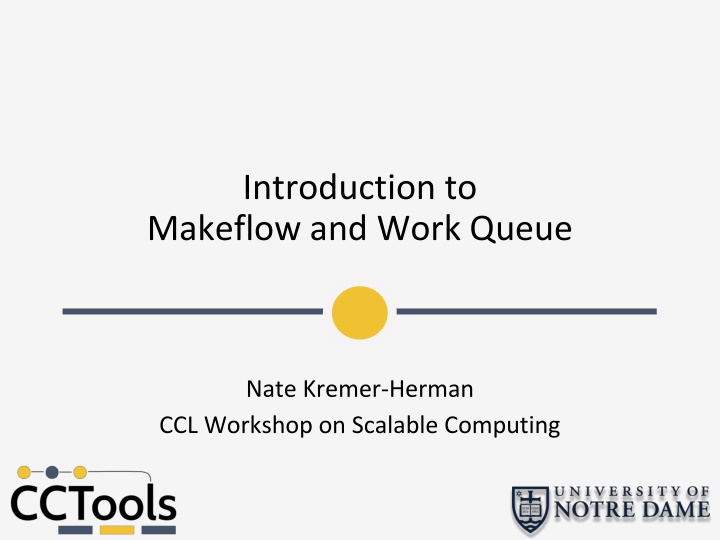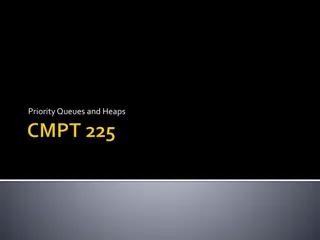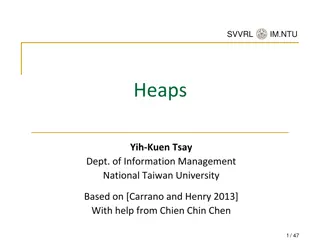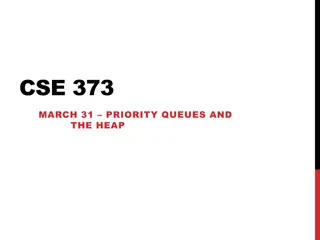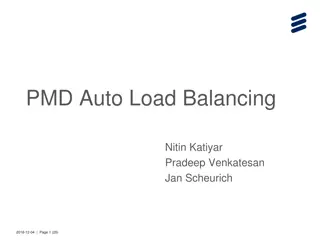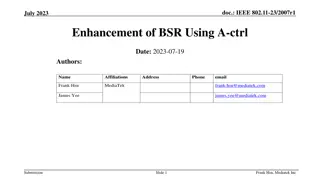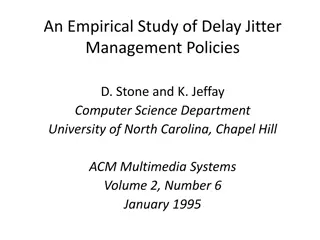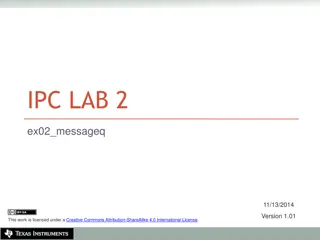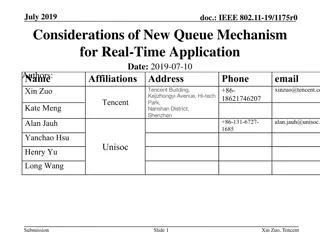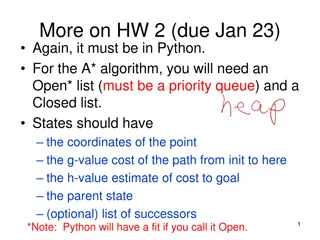Introduction to Makeflow and Work Queue
Makeflow and Work Queue are discussed in this workshop presentation, covering their functionalities, syntax, and how to run workflows locally or on different batch systems. Learn about the portability, parallelism, fault tolerance, and resource management provided by Makeflow and Work Queue. Examples and usage scenarios are illustrated to help understand how to utilize these tools effectively in scalable computing environments.
Download Presentation

Please find below an Image/Link to download the presentation.
The content on the website is provided AS IS for your information and personal use only. It may not be sold, licensed, or shared on other websites without obtaining consent from the author.If you encounter any issues during the download, it is possible that the publisher has removed the file from their server.
You are allowed to download the files provided on this website for personal or commercial use, subject to the condition that they are used lawfully. All files are the property of their respective owners.
The content on the website is provided AS IS for your information and personal use only. It may not be sold, licensed, or shared on other websites without obtaining consent from the author.
E N D
Presentation Transcript
Introduction to Makeflow and Work Queue Nate Kremer-Herman CCL Workshop on Scalable Computing
Makeflow: A Portable Workflow System
An Old Idea: Makefiles part1 part2 part3: input.data split.py ./split.py input.data out1: part1 mysim.exe ./mysim.exe part1 >out1 out2: part2 mysim.exe ./mysim.exe part2 >out2 out3: part3 mysim.exe ./mysim.exe part3 >out3 result: out1 out2 out3 join.py ./join.py out1 out2 out3 > result
Makeflow = Make + Workflow Provides portability across batch systems. Enable parallelism (but not too much!) Trickle out work to batch system. Fault tolerance at multiple scales. Data and resource management. Makeflow Work Queue Local SLURM TORQUE
Makeflow Syntax [output files] : [input files] [command to run] One rule calib.dat sim.exe out.txt in.dat sim.exe in.dat p 50 > out.txt out.txt : in.dat calib.dat sim.exe out.txt : in.dat sim.exe p 50 in.data > out.txt sim.exe p 50 in.data > out.txt Not quite right!
You must state all the files needed by the command.
example.makeflow out.10 : in.dat calib.dat sim.exe sim.exe p 10 in.data > out.10 out.20 : in.dat calib.dat sim.exe sim.exe p 20 in.data > out.20 out.30 : in.dat calib.dat sim.exe sim.exe p 30 in.data > out.30
Running Makeflow Run a workflow locally: % makeflow example.makeflow Clean up the workflow outputs: % makeflow c example.makeflow Run the workflow on Torque: % makeflow T torque example.makeflow Run the workflow on Condor: % makeflow T condor example.makeflow
Makeflow + Batch System Makefile XSEDE Torque Cluster Private Cluster Makeflow Campus Condor Pool Public Cloud Provider Local Files and Programs
Makeflow + Work Queue torque_submit_workers W W Makefile XSEDE Torque Cluster W Private Cluster W submit tasks W Thousands of Workers in a Personal Cloud W Makeflow W W W Campus Condor Pool Public Cloud Provider ssh W W W W Local Files and Programs condor_submit_workers
Advantages of Work Queue Harness multiple resources simultaneously. Pilot jobs (Work Queue workers) hold on to cluster nodes to execute multiple tasks rapidly. Scale resources up and down as needed. Better management of data, with local caching for data intensive tasks. Matching of tasks to nodes with data.
Running Makeflow with Work Queue To start the Makeflow: % makeflow T wq example.makeflow Could not create work queue on port 9123. % makeflow T wq p 0 example.makeflow Listening for workers on port 8374 To start one worker: % work_queue_worker master.hostname.org 8374
Project Names makeflow N myproject work_queue_worker N myproject connect to workflow.iu:9050 Makeflow (port 9050) Worker advertise query work_queue_status Catalog query myproject is at workflow.iu:9050
Using Project Names To start Makeflow with a project name: % makeflow T wq N myproject example.makeflow Listening for workers on port XYZ Start one worker: % work_queue_worker -N myproject Start many workers: % work_queue_factory -T condor -N myproject
Work Queue Visualization Dashboard ccl.cse.nd.edu/software/workqueue/status
Work Queue Factory No need to manually submit workers. Scales to your workflow automatically (whether up or down). One-stop worker submission tool. Supports manual configuration of minimum and maximum workers to maintain if you know your worker needs. Preferred method of worker submission going forward due to its simplicity.
Resilience and Fault Tolerance MF +WQ is fault tolerant in many different ways: If Makeflow crashes (or is killed) at any point, it will recover by reading the transaction log and continue where it left off. Makeflow keeps statistics on both network and task performance, so that excessively bad workers are avoided. If a worker crashes, the master will detect the failure and restart the task elsewhere. Workers can be added and removed at any time during the execution of the workflow. Multiple masters with the same project name can be added and removed while the workers remain. If the worker sits idle for too long (default 15m) it will exit, so it does not hold resources while idle.
Visit our website: ccl.cse.nd.edu Follow us on Twitter: @ProfThain Check out our blog: cclnd.blogspot.com
